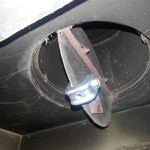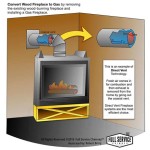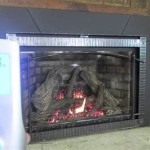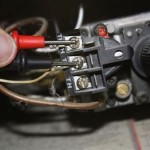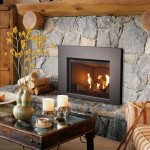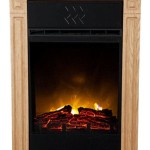```html
Gas Fireplace Repair Chicago IL: A Comprehensive Guide
Chicago winters are notorious for their severity, making a functioning gas fireplace a crucial component of many homes. When a gas fireplace malfunctions, it can disrupt comfort and potentially pose safety risks. Understanding the common issues, the importance of professional repair, and preventative maintenance is key to ensuring a safe and efficient heating season.
This article provides a comprehensive overview of gas fireplace repair in Chicago, Illinois, covering typical problems encountered, the advantages of hiring qualified technicians, and essential maintenance practices to prolong the life of the appliance.
Common Gas Fireplace Problems
Gas fireplaces, while generally reliable, are susceptible to a range of issues that can compromise their performance. Identifying the symptoms of these problems is the first step towards effective repair. Some of the most frequent issues encountered by homeowners in Chicago include:
Pilot Light Issues: The pilot light is a small flame that ignites the main burner. Problems can range from the pilot light failing to light, extinguishing shortly after ignition, or burning with an irregular or weak flame. These issues often stem from a dirty pilot assembly, a faulty thermocouple, or a low gas supply pressure.
Burner Problems: The main burner distributes the gas and produces the primary source of heat. Burner problems manifest as uneven flame distribution, yellow or sooty flames (indicating incomplete combustion), or failure to ignite altogether. Blocked burner ports, a faulty gas valve, or insufficient air supply can cause these issues.
Gas Leaks: Gas leaks are a serious safety concern. They can be detected by a distinct gas odor near the fireplace. Even a faint smell warrants immediate attention and professional evaluation. Gas leaks can originate from loose fittings, corroded gas lines, or a malfunctioning gas valve.
Ignition Problems: Gas fireplaces typically use either a pilot light or an electronic ignition system. Electronic ignition systems can fail due to a malfunctioning igniter, a faulty control module, or a weak power supply. Pilot light systems face issues as described above.
Ventilation Issues: Proper ventilation is crucial for safe and efficient operation. Blocked or damaged vents can lead to carbon monoxide buildup, resulting in health hazards. Proper venting ensures combustion byproducts are safely expelled from the home.
Soot Buildup: Incomplete combustion can lead to soot buildup on the glass, logs, and surrounding areas. This indicates a problem with the gas-air mixture, ventilation, or burner function. Excessive soot can reduce the fireplace's efficiency and pose a fire hazard.
Control Issues: Modern gas fireplaces often feature remote controls, thermostats, and other electronic controls. These components can malfunction, leading to problems with temperature regulation, on/off operation, and other settings. Faulty wiring, damaged sensors, or a defective control module can be the cause.
The Importance of Professional Gas Fireplace Repair
Attempting to repair a gas fireplace without the necessary expertise and tools can be dangerous and lead to further damage. Hiring a qualified technician for gas fireplace repair in Chicago offers several key benefits:
Safety: Gas appliances involve flammable gas and high temperatures, making safety a paramount concern. Professional technicians are trained to identify and address potential hazards, such as gas leaks and carbon monoxide buildup. They adhere to strict safety protocols and use specialized equipment to ensure safe operation.
Expertise and Experience: Licensed technicians possess in-depth knowledge of gas fireplace systems, including their components, operation, and potential problems. They have the experience to diagnose issues accurately and implement effective repairs. Their training allows them to troubleshoot complex problems that may not be obvious to a homeowner.
Proper Diagnosis: Accurate diagnosis is crucial for effective repair. Technicians use specialized tools and techniques to pinpoint the root cause of the problem, rather than simply addressing the symptoms. This ensures that the underlying issue is resolved, preventing recurrence of the problem.
Correct Parts and Tools: Repairing a gas fireplace often requires specific parts and tools. Professional technicians have access to a wide range of replacement parts and specialized equipment that are not readily available to the general public. Using the correct components ensures proper fit and function, contributing to the longevity of the repair.
Compliance with Codes and Regulations: Gas fireplace installations and repairs are subject to local building codes and regulations. Licensed technicians are familiar with these requirements and ensure that all work is performed in compliance with applicable standards. This helps to avoid potential fines and ensures the safety of the installation.
Warranty Protection: Many professional repair services offer warranties on their work and the parts they use. This provides peace of mind, knowing that any issues arising after the repair will be addressed without additional cost. This warranty protection can save homeowners money in the long run.
Carbon Monoxide Detection: Gas fireplaces can produce carbon monoxide, a colorless and odorless gas that can be lethal. Technicians are trained to check for carbon monoxide leaks and ensure that the fireplace is venting properly. They can also advise homeowners on the proper placement and maintenance of carbon monoxide detectors.
Prevention of Further Damage: Incorrect repairs can lead to further damage to the fireplace or even the gas lines. Professional technicians have the expertise to avoid these pitfalls and ensure that the repair is performed correctly, preventing costly additional repairs in the future.
Gas Fireplace Maintenance Tips for Chicago Homeowners
Regular maintenance is essential for ensuring the safe and efficient operation of a gas fireplace. Implementing these maintenance practices can help to prevent common problems and extend the life of the appliance:
Annual Inspections: Schedule an annual inspection by a qualified technician. A professional inspection can uncover potential problems before they escalate into major repairs. The technician will inspect the burner, pilot assembly, venting system, and other components for signs of wear, damage, or blockage.
Clean the Fireplace Regularly: Keep the fireplace clean by removing dust, soot, and debris. Use a soft brush or vacuum cleaner to clean the burner, logs, and surrounding areas. Be sure to follow the manufacturer's instructions for cleaning specific components. This preventative measure improves performance and reduces fire risk.
Check the Venting System: Inspect the venting system regularly for any signs of blockage or damage. Ensure that the vent is clear of debris, such as leaves, bird nests, or snow. A blocked vent can lead to carbon monoxide buildup, posing a serious health hazard.
Inspect the Gas Lines: Periodically inspect the gas lines for any signs of leaks or corrosion. Use a soapy water solution to check for leaks around fittings and connections. If any leaks are detected, immediately shut off the gas supply and contact a qualified technician.
Test the Pilot Light: Regularly test the pilot light to ensure it is functioning properly. If the pilot light fails to light or extinguishes frequently, consult a qualified technician. Ensure the pilot light is burning with a strong, blue flame.
Monitor the Flame Appearance: Pay attention to the appearance of the flame. A healthy flame should be blue with yellow tips. Yellow or sooty flames indicate incomplete combustion, which can lead to carbon monoxide production and soot buildup. Consult a technician if the flame appearance is abnormal.
Clean the Glass: Clean the glass on the fireplace regularly to remove soot and residue. Use a commercially available glass cleaner specifically designed for gas fireplaces. Avoid using abrasive cleaners, as they can scratch the glass.
Replace the Batteries in Remote Controls: If the fireplace uses a remote control, replace the batteries regularly to ensure proper operation. Weak batteries can cause intermittent or unreliable control of the fireplace.
Install Carbon Monoxide Detectors: Install carbon monoxide detectors on every level of the home, particularly near sleeping areas. Test the detectors regularly and replace the batteries as needed. Carbon monoxide detectors provide an early warning of dangerous gas levels.
By understanding common gas fireplace problems, recognizing the importance of professional repair, and implementing regular maintenance practices, Chicago homeowners can ensure the safe and efficient operation of their gas fireplaces throughout the winter season. Prioritizing safety and preventative care provides comfort and peace of mind.
```
Gas Fireplaces Lindemann Chicago Services

Bart Fireplace Chimney Repair Restoration Rebuild Chicago Il

Chicago Gas Fireplace Logs Conversion Installation

Top 10 Best Gas Fireplace Repair In Chicago Il January 2024 Yelp

Chimney Sweep Chicago Fireplace Co

Chicago Chimney Sweep Cleaning Fireplace Repair

Gas Log Installation Nw Suburbs Of Chicago Il Aelite Chimney Specialties

Gas Log Installation Nw Suburbs Of Chicago Il Aelite Chimney Specialties

Electric Gas Fireplace Repair Services Lombard Il Chicago Chimney

Gas Log Installation Nw Suburbs Of Chicago Il Aelite Chimney Specialties


